Memorials

On July 14, unskilled immigrant workers led a strike against the Pressed Steel Car Company. Strain among the strikers, replacement laborers, and state police erupted into a riot on August 22. Eleven men were killed near this footbridge. Strikers were aided by the Industrial Workers of the World.
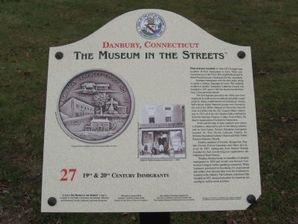
The potato famine of 1846-1851 brought large numbers of Irish immigrants to town. Many purchased homes in the Town Hill neighborhood and St. Peter Church became a focal point for the community.
Germans immigrants were the first major group to speak a foreign language in town. The majority worked as hatters. Immanuel Lutheran Church was founded in 1881 and in 1882 the church founded Danbury’s first parochial school.
The first Italians arrived in the 1880s and were employed as work crews for... Read More
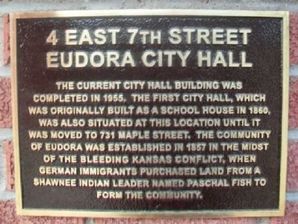
The current City Hall building was completed in 1955. The first City Hall, which was originally built as a school house in 1860, was also situated at this location until it was moved to 731 Maple Street. The community of Eudora was established in 1857 in the midst of the Bleeding Kansas conflict, when German immigrants purchased land from a Shawnee Indian leader named Paschal Fish to form the community.
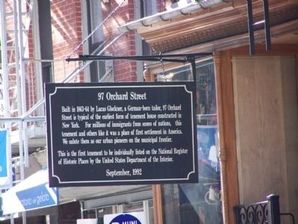
Built in 1863-64 by Lucas Glockner, a German-born tailor, 97 Orchard Street is typical of the earliest form of tenement house constructed in New York. For millions of immigrants from scores of nations, this tenement and others like it was a place of first settlement in America. We salute them as our urban pioneers on the municipal frontier. This is the first tenement to be individually listed on the National Register of Historic Places by the United States Department of the Interior. September... Read More
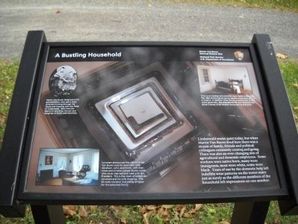
Lindenwald seems quiet today, but when Martin Van Buren lived here there was a stream of family, friends and political colleagues constantly coming and going. There was also an ever-changing mix of agricultural and domestic employees. Some workers were native born, many were immigrants, most were white, some were black. Years of use by the domestic help left indelible wear patterns on the tower stairs just as surely as the different members of the household left impressions on one another.
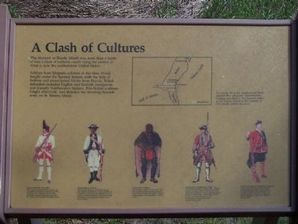
The skirmish at Bloody Marsh was more than a battle.
It was a clash of cultures - each vying for control of
what is now the southeastern United States.
Soldiers from Hispanic colonies in the New World
fought under the Spanish banner, with the help of
Indians and emancipated blacks from Florida. British
defenders included English and Scottish immigrants
and friendly Southeastern Indians. The British coalition fought effectively, and defeated the invading Spanish army of St. Simon Island.
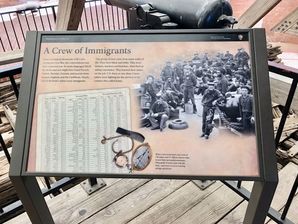
Had you stepped aboard the USS Cairo
during the Civil War, the conversations may
have surprised you. So many languages! Stroll
the decks and you might have heard French,
Danish, Russian, German, and accents from
Ireland, England, and the Caribbean. Nearly
half of the boat's sailors were immigrants.
This group of men came from many walks of
life. They were black and white. They were
farmers, teachers and butchers. Most had no
sailing experience. They learned their duties
on the job. U.S.-... Read More
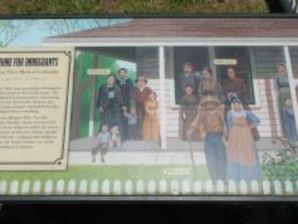
After the 1857 Fire, many generations of immigrants made this modest structure their family home. The new tenants applied their special touches, redecorating or expanding it to suit their needs. At times, they saved money by using salvaged materials from other Columbia buildings in their remodeling.
The Biddle, Bacom, Morgan, Hale, Vassallo, Sarton and Martinez families’ stories and personal experiences in this home helped to define the history of the town. The stories and dreams of these... Read More
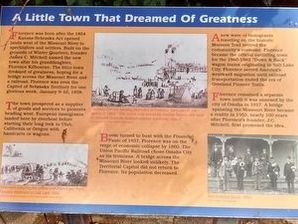
Florence was born after the 1854 Kansas-Nebraska Act opened lands west of the Missouri River to speculators and settlers. Build on the grounds of Winter Quarters, founder James C. Mitchell named the new town after his granddaughter, Florence Kilbourne. The little town dreamed of greatness, hoping fora bridge across the Missouri River and a railroad. Florence was even the Capitol of Nebraska Territory for one glorious week, January 9-16, 1858.
The town prospered as a supplier of goods and... Read More
In 2005, former Vietnamese refugees who had stayed on Pulau Bidong, a Vietnamese refugee camp off the northeastern coast of Malaysia, returned and erected a simple memorial they called "The Memorial to Boat People". This memorial paid honor the Vietnamese refugee experience and gave thanks to the many organizations and people that helped the Vietnamese refugees. Six months later, the memorial was completely destroyed and discarded. No traces remain except the concrete rubble from the support... Read More
